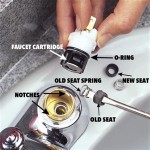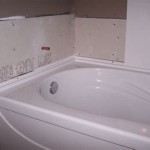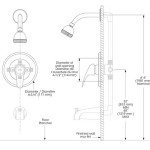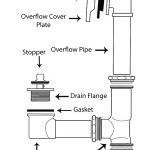Bathtub Grab Rail Placement
Bathtub grab rails offer crucial support for individuals entering and exiting the bathtub, promoting safety and independence. Proper placement is paramount to maximizing their effectiveness and preventing accidents. This article explores important considerations for bathtub grab rail placement.
Understanding User Needs: Placement should be tailored to the specific needs of the user. Factors such as mobility limitations, height, and physical condition influence optimal grab bar positioning. A user with limited lower body strength may benefit from grab bars placed higher on the wall, while individuals with balance issues may require rails near the entrance and along the back wall.
Key Locations for Grab Bars: Several key locations are typically considered for grab bar installation. These include the area around the bathtub entrance, along the back wall, and inside the shower area if applicable. Grab bars near the entrance aid in stepping over the tub's edge, while bars along the back wall provide support while sitting and standing.
Recommended Heights and Distances: While specific measurements should be determined based on individual needs, certain guidelines can inform placement decisions. Grab bars are often installed 33 to 36 inches above the finished floor of the bathtub. This height generally provides comfortable leverage for most adults. For users with specific mobility challenges, adjustments may be required. Horizontal bars should be positioned 33 to 36 inches above the bathtub floor and extend 12 to 24 inches in length. Vertical bars should be installed 8 to 10 inches from the tub’s rim and extend 18 to 24 inches in height.
ADA Compliance: The Americans with Disabilities Act (ADA) provides guidelines for accessible design, including grab bar placement in bathrooms. Compliance with ADA standards ensures usability for a broader range of individuals and contributes to creating an inclusive environment. ADA guidelines specify dimensions, mounting locations, and load-bearing capacities for grab bars in accessible bathing facilities.
Wall Reinforcement: Grab bars must be securely anchored to the wall to support the user's weight. Proper installation requires mounting the bars to wall studs or using reinforced backing boards. Failure to securely mount grab bars can result in accidents and injuries. Consulting a qualified contractor is essential to ensure proper installation and wall reinforcement.
Grab Bar Types and Materials: Various grab bar types and materials are available to suit different bathroom aesthetics and user preferences. Straight grab bars are commonly used for general support, while angled bars offer assistance with specific movements, such as transferring in and out of the tub. Grab bars are typically made from stainless steel, chrome-plated brass, or plastic. Selecting durable, corrosion-resistant materials ensures longevity and maintains the bar's functionality over time.
Placement for Shower Combinations: In bathtub and shower combinations, grab bars are crucial for both areas. Placement should facilitate safe transitions between the shower and the tub. Consider installing a vertical bar on the wall adjacent to the showerhead and a horizontal bar near the tub’s edge to assist with entry and exit. Additional grab bars may be required within the shower area itself, depending on the user's needs and the shower's configuration.
Professional Consultation: Consulting with an occupational therapist or a certified aging-in-place specialist (CAPS) is advisable, especially for individuals with complex mobility needs. These professionals can assess individual requirements and recommend optimal grab bar placement to maximize safety and independence. They can also provide guidance on other bathroom modifications that may enhance accessibility.
Maintenance and Inspection: Regular inspection and maintenance of grab bars are essential to ensure continued safety. Check for loose screws, corrosion, and other signs of wear. Tighten screws as needed and replace any damaged grab bars promptly. Regular maintenance helps prevent accidents and extends the lifespan of the grab bars.
Beyond Placement: Additional Safety Measures: While proper placement is crucial, additional safety measures can further enhance bathroom safety. Non-slip mats or appliqués inside the tub can prevent slips and falls. A shower chair or bench can provide a secure and comfortable place to sit while bathing. These additions, coupled with correctly placed grab bars, create a safer and more accessible bathing environment.
Considering Future Needs: When planning grab bar installation, anticipating future needs is prudent. Even if current mobility is not an issue, installing grab bars proactively can provide future benefits and adapt to changing circumstances. This forward-thinking approach can prevent costly renovations down the line and ensure long-term safety and accessibility in the bathroom.

Ada Bathtub Grab Bar Placement Guide Commercial

Proper Shower Grab Bar Placement Keeps Your Family Safe Improveit

Ada Bathtub Grab Bar Placement Guide Commercial

How To Install A Grab Bar In Bathroom

Proper Shower Grab Bar Placement Keeps Your Family Safe Improveit

Ada Requirements For Grab Bar Height In Bathtubs Oc Bars

Installing Grab Bars In Your Bathroom A Complete Guide

Ada Bathtub Grab Bar Placement Guide Commercial

Grab Bar Placement Entry

Grab Bar Installation Picking The Right Style Kohll S Rx
Related Posts








